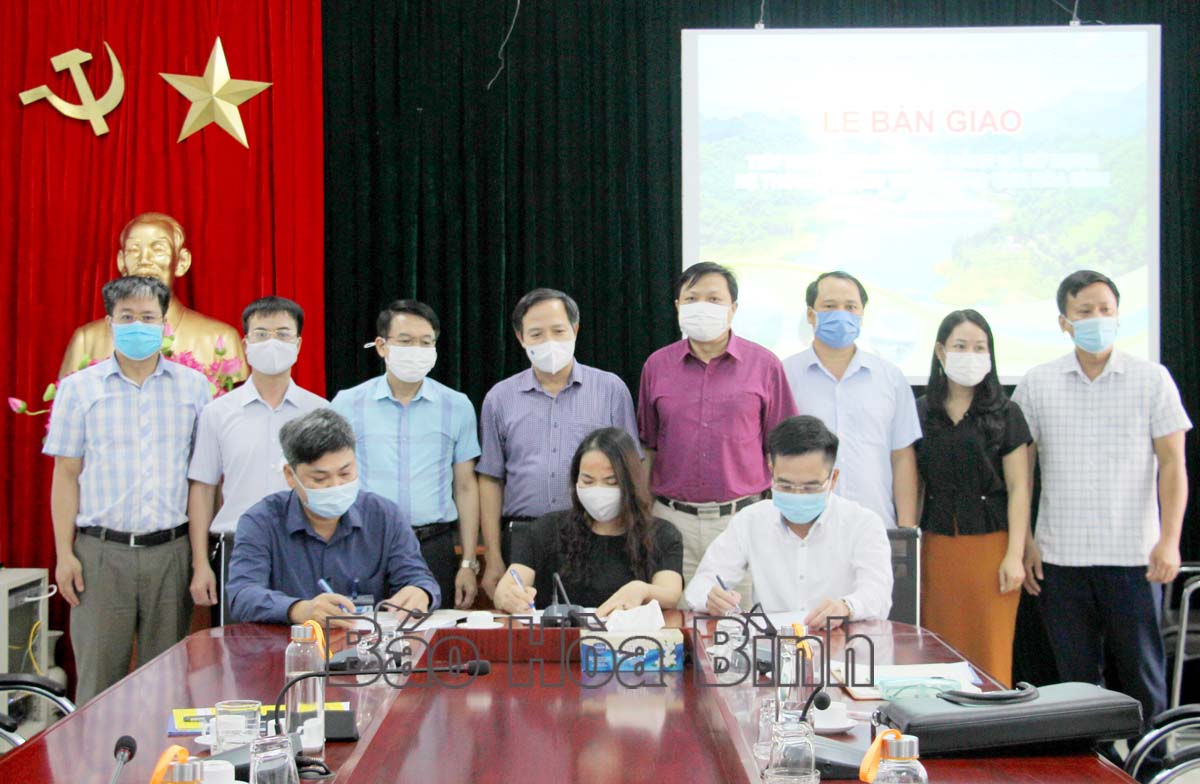
(HBO) – The Hoa Binh provincial Department of Information and Communications in collaboration with VNPT Hoa Binh held a ceremony to hand over a smart tourism portal to the provincial Department of Culture, Sports and Tourism for management, operation and use. Attending the event was Standing Vice Chairman of the provincial People’s Committee Nguyen Van Toan.
Photo:
Leaders of the provincial Department of Information and Communications, the
Department of Culture, Sports and Tourism and VNPT Hoa Binh sign the minutes on
the handover of the portal
The smart tourism portal of Hoa Binh is a component of the smart urban
development solution, using information and communication technology to form a
tourism ecosystem and create mutual reciprocal benefits among visitors,
authorities and businesses, contributing to sustainable economic development.
The system is expected to help State management agencies improve the efficiency
of tourism management, ensure security and social order, promote tourism,
develop international markets and increase budget collection thanks to social
investment in tourism.
After the project was approved, the provincial Department of Information and
Communications worked with the provincial Department of Culture, Sports and
Tourism and the VNPT Hoa Binh to promptly build the portal.
Speaking at the ceremony, Vice Chairman Toan emphasised that the portal is an
effective support tool for local tourism development while also promoting
digital transformation in tourism under the national and local digital
transformation scheme, contributing to gradually realising goals and tasks set
in Resolution on tourism development adopted by the provincial Party Congress.
Lauding the provincial Department of Information and Communications for
ensuring the project’s progress, he asked the Department of Culture, Sports and
Tourism to effectively operate and manage the system. The Department of
Information and Communications must ensure servers, IT infrastructure and
information safety at the local data centre while popularising the portal among
local organisations, enterprises and residents. The VNPT Hoa Binh will continue
offering technical support to the Department of Culture, Sports and Tourism and
further perfect the system in the future while continuing to operating the wifi
system free of charge as committed./.
A diverse chain of eco-tourism and resort destinations concentrated in Hoa Binh city and the districts of Tan Lac, Da Bac, and Luong Son… Along with the launch of several key high-quality resort tourism projects, these developments have reshaped the landscape and enhanced the appeal of Hoa Binh as a travel destination.
Boasting diverse terrain, a mild climate, and rich natural resources, Cao Phong district is increasingly asserting its place on Vietnam’s tourism map, attracting both domestic and foreign visitors. The district is renowned for its stunning landscapes, majestic mountains, a crystal-clear hydropower lake, and the unique cultural identity of local ethnic groups.
With its pristine landscapes, unique cultural heritage of Muong ethnic minority, and an expanding range of visitor experiences, Tan Lac district of Hoa Binh has fast become a captivating destination for both domestic and international tourists.
Until now, Sung village in Cao Son commune, Da Bac district remains the only Dao ethnic community in Hoa Binh province to develop a community-based tourism model. Beyond its untouched natural landscapes, cultural identity serves as the cornerstone attraction for visitors.
Alongside the diverse cultural identities of the Kinh, Muong, Tay, Thai, Dao, and Mong ethnic people, Hoa Binh province is also renowned as the "capital" of the northwestern Vietnamese cuisine, offering unique and distinctive dishes. At festivals, during Lunar New Year (Tet), or on significant family or community occasions, special dishes are prepared, leaving a lasting impression on visitors.
A Phong Linh (Yellow Tabebuia) flower garden in Thang village, Thach Yen commune, Cao Phong district is currently in full bloom, drawing a large number of visitors.



